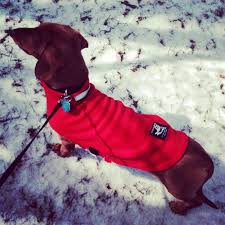How to keep warm outside: 5 science-based tips
Wondering how to keep warm in frigid, soul-shattering temperatures? You're not alone.
Thanks to Chris Gayomali the science and technology editor for TheWeek.com
Here are a few practical, science-based tips for keeping warm:
- Stay dry
THE GOLDEN RULE to stay warm is "Don't get cold in the first place."
That's obvious, you say. But is it? The cold can sneak up on you, especially if you're tromping through icy puddles or sweating in that big parka. So stay dry, especially by dressing in layers. Try layering with a "synthetic, wicking base layer to pull the moisture off your skin." Then on top of that, you'll need a layer that insulates. "Heat tech" base layers — tights, leggings, form-fitting undershirts, etc. — are lightweight, easy to throw on underneath your normal work clothes, and most importantly, keep you toasty with minimal discomfort. Try not to let cotton (which can absorb sweat) touch your skin, if you can help it. Sorry Mom.
2. Protect your core
The average human core temperature is 98.6 degrees Fahrenheit; hypothermia occurs when body temp dips below 95 degrees. Obviously, keeping your torso insulated is the best thing you can do to keep the rest of you warm and humming along, especially if you pack on a few extra winter pounds.
For example, when people lose fingers, toes, and other extremities to frostbite, at work is one of the body's natural self-preservation systems: It simply stops  sending blood out in order to protect the vital organs. So, as counterintuitive as it sounds, keeping your torso warm is the number one way to keep your hands and feet feeling warm, too. (More on that in a bit.)
sending blood out in order to protect the vital organs. So, as counterintuitive as it sounds, keeping your torso warm is the number one way to keep your hands and feet feeling warm, too. (More on that in a bit.)
3. The "winter hat" might be a myth
Good news for people with great hair: The assumption that 70 percent of a person's body heat escapes through their head is patently false. University of Michigan professor Andrew Maynard debunks the popular "dancing naked with a winter hat" myth, and explains that body-heat loss relates to "how much skin is exposed, not which part of the body you're exposing." That said, wearing a warm hat can and definitely will help you keep warm. (The more skin you cover up the better.) But a hat shouldn't be depended on in lieu of down coat or jacket with good insulation.
4. Mittens keep your hands warmer than gloves
Protecting your core should be your number one priority. But you need to cover your skin to keep it from getting frostbitten. Remember: The less skin you have exposed the better. If you don't mind having less mobility in the cold, mittens may be preferable to gloves, since clustering the fingers together helps to produce more insulating body heat.
5. Drink water
Summit-trekking adventurers agree: Water is actually amazing for retaining body heat. Simply put, the more you have in your system, the easier it is to keep warm. Stay hydrated — especially before you dash out into the frozen slush every morning.